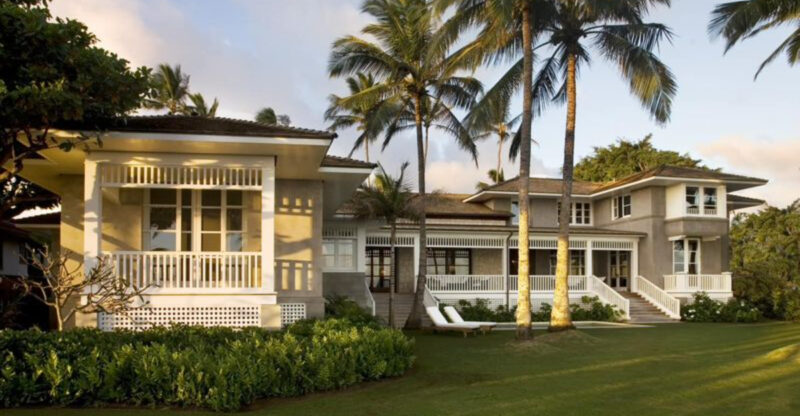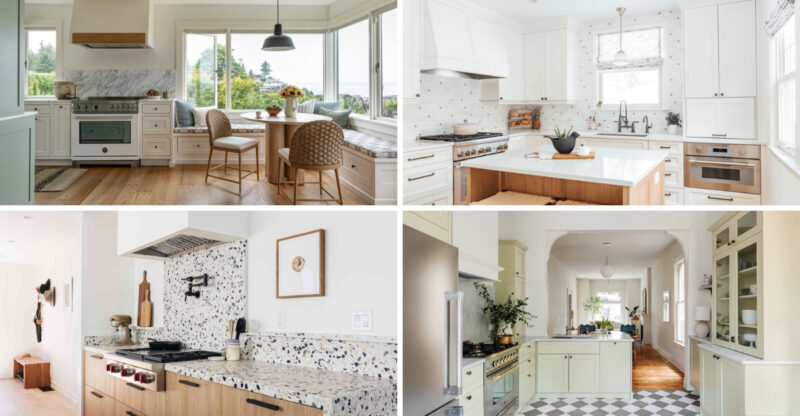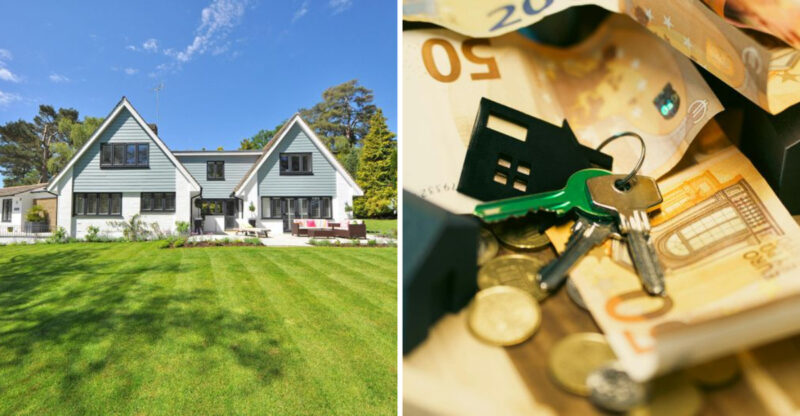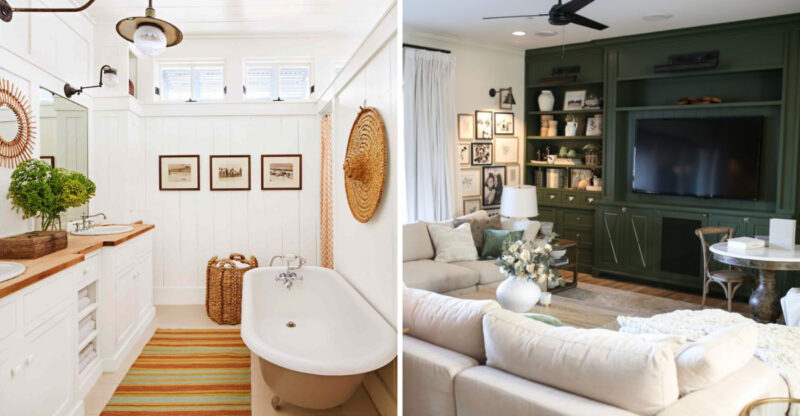13 Oregon Home Trends Everyone Regrets – And 10 That Could Be Next
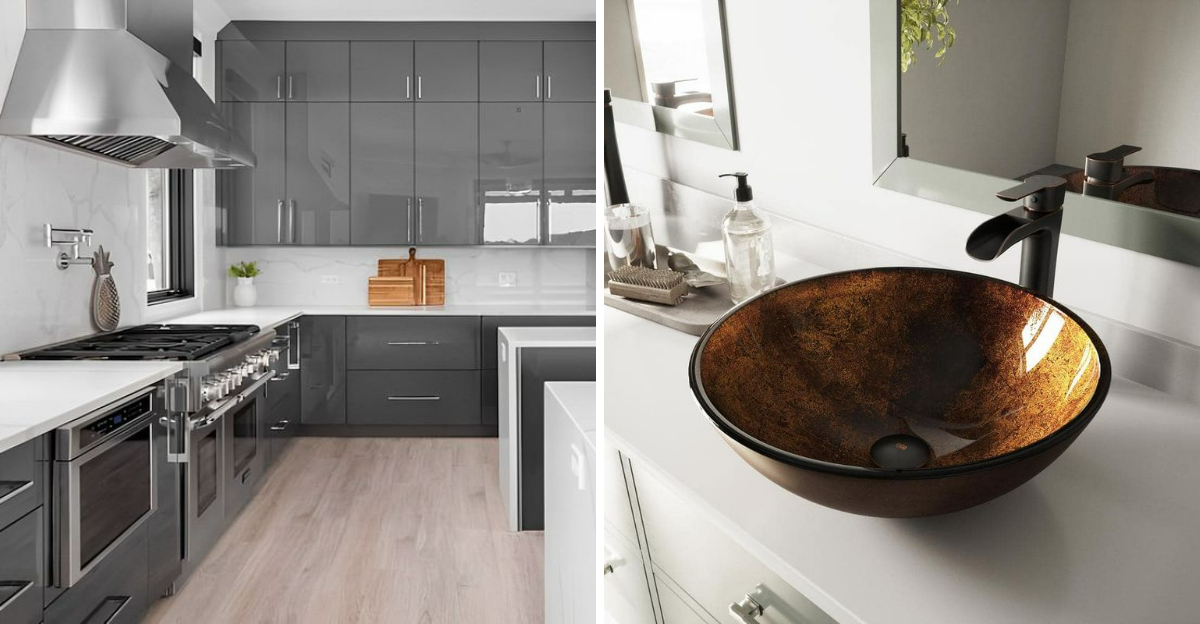
Oregon homeowners have seen their fair share of design trends come and go over the years. Some choices that seemed perfect at the time now feel outdated or impractical, while new trends are emerging that might follow the same path.
I’m breaking down the regrettable decisions many Oregonians wish they could undo, plus the current favorites that could soon fall out of favor.
1. All-Gray Interiors
Gray became the go-to neutral for every surface imaginable, from walls to furniture to floors. What started as a sophisticated choice quickly turned into a monotonous sea of lifeless color.
Homes began feeling more like sterile offices than warm living spaces. Now I’m seeing homeowners desperately adding pops of color and natural wood tones to break up the grayness and bring life back into their rooms.
2. Barn Doors Everywhere
Sliding barn doors seemed like the perfect rustic-chic addition to any room. People installed them on bathrooms, bedrooms, pantries, and closets without thinking about practicality.
The problem? They don’t seal properly, offer zero privacy, and the hardware collects dust like crazy. Traditional hinged doors are making a comeback because they actually do what doors are supposed to do—close completely and quietly.
3. Dark Espresso Cabinets
Espresso cabinets dominated kitchens for years, promising elegance and drama. Instead, they made kitchens feel cave-like and smaller than they actually were.
Dust and fingerprints show up instantly on the dark finish, requiring constant cleaning. Oregon homeowners are now ripping them out in favor of lighter woods or painted cabinets that brighten spaces and feel more contemporary and welcoming to family and guests.
4. Shiplap Walls
Thanks to certain home improvement shows, shiplap became the answer to every design question. Homeowners covered entire walls, ceilings, and even accent areas with horizontal planks.
The farmhouse look quickly became tired and dated. Cleaning between all those grooves is a nightmare, and the style now screams a specific era rather than timeless design. Smooth walls with interesting paint colors are winning out instead.
5. Heavy Granite Counters
Granite countertops with busy patterns and multiple colors were once the ultimate status symbol in kitchens. Every home renovation included these heavy, ornate surfaces that cost a fortune.
Now they just look chaotic and overwhelming. The busy patterns clash with modern minimalist aesthetics and make decorating challenging. Homeowners prefer clean quartz or simple concrete that provides a calm backdrop rather than competing for attention with everything else.
6. Industrial Exposed Ducts
Exposed ductwork and pipes gave homes an edgy, warehouse-inspired vibe that felt modern and different. Homeowners paid contractors to leave ceilings unfinished or even remove existing ceiling treatments.
Reality set in when dust accumulated on every surface and the raw look just seemed incomplete. The industrial aesthetic works in actual lofts but feels out of place in residential homes. Polished ceiling treatments are returning for good reason.
7. Vessel Sinks
Bowl-shaped vessel sinks perched on countertops looked like sculptural art pieces in bathrooms. They came in gorgeous materials like glass, stone, and hammered copper that caught everyone’s eye.
Daily use revealed major flaws: water splashes everywhere, cleaning around the base is impossible, and they take up valuable counter space. Undermount sinks are reclaiming bathroom counters because functionality beats pretty when you’re brushing your teeth every morning.
8. Wall-to-Wall Carpeting
Plush carpeting throughout entire homes seemed cozy and luxurious at installation time. Oregon’s damp climate had other plans for those soft fibers.
Moisture, mud, and mildew turned carpets into maintenance nightmares that harbored allergens and odors. Hardwood and tile flooring are taking over because they’re easier to clean, last longer, and don’t trap the wetness that comes with Pacific Northwest living. Your nose will thank you for the switch.
9. Subway Tile Overload
White subway tiles in classic brick pattern became the default backsplash and shower choice for every renovation. Contractors could install them blindfolded, and homeowners felt safe choosing something so universally accepted.
Safe turned into boring real fast. Every home started looking identical, and the lack of personality became glaring. Creative tile patterns, interesting shapes, and colorful alternatives are finally getting their moment as people seek actual character in their spaces.
10. High-Gloss Finishes
Shiny, reflective surfaces on cabinets and furniture promised a sleek, modern look that would elevate any space. The glossy finish seemed sophisticated in showrooms under perfect lighting.
At home, every fingerprint, smudge, and imperfection became magnified on those mirror-like surfaces. Constant wiping down became exhausting. Matte and satin finishes are replacing high-gloss because they hide daily wear beautifully while still looking polished and intentional without the maintenance headache.
11. Open Shelving in Kitchens
Removing upper cabinets in favor of open shelves created an airy, gallery-like kitchen aesthetic. Pinterest boards overflowed with perfectly styled dishes and glassware on display.
Real life isn’t a photoshoot. Dust settles on everything, grease from cooking coats your dishes, and maintaining that styled look requires daily effort. Homeowners miss the hidden storage that cabinets provided. Closed cabinets are making a comeback because sometimes you just need to hide the mess behind doors.
12. Accent Walls
One dramatically different wall seemed like an easy way to add personality without committing to painting an entire room. Bold colors or busy patterns made that single wall the focal point.
The result often felt disjointed and choppy, breaking up the flow rather than enhancing it. Accent walls now look like you couldn’t afford enough paint for the whole room. Cohesive color schemes throughout spaces create better harmony and more sophisticated results.
13. Tuscan-Style Everything
Faux-finished walls, wrought iron scrollwork, and terracotta colors transformed Oregon homes into wannabe Italian villas. The Mediterranean aesthetic felt exotic and luxurious during its peak popularity.
Now it just feels costume-like and stuck in the early 2000s. The heavy, ornate elements clash with contemporary preferences for cleaner lines. Homeowners are stripping away the Tuscan layers to reveal simpler, more authentic Northwest style that actually suits Oregon’s natural beauty and climate better.
14. Overly Smart Homes
Automating every possible function seemed futuristic and convenient at first. Light switches, thermostats, locks, blinds, and appliances all connected to apps and voice commands.
Technology updates broke systems regularly, and guests couldn’t figure out how to turn on a simple light. When the internet goes down, your whole house becomes unusable. Balanced integration with manual backups is the smarter approach. Sometimes a regular light switch is actually the most advanced solution for everyday living.
15. Minimalism Taken Too Far
Decluttering morphed into eliminating nearly everything, leaving homes looking like sterile showrooms rather than lived-in spaces. Every surface stayed empty, and personal items disappeared into hidden storage.
Homes lost their personality and warmth in the process. Family photos, books, and meaningful objects make a house feel like a home. The new approach balances clean spaces with curated collections that tell your story. Functional minimalism beats empty rooms every time.
16. Matching Furniture Sets
Buying complete bedroom or living room sets from one collection guaranteed everything would coordinate perfectly. Furniture stores made it easy to purchase matching pieces all at once.
The result looked like a catalog page rather than a personal space. No character or individuality came through when every piece matched exactly. Mixing different styles, eras, and finishes creates more interesting and authentic spaces. Your home should reflect collected experiences, not a single shopping trip at one store.
17. Popcorn Ceilings Painted Over
Instead of removing outdated popcorn texture, homeowners painted over it hoping a fresh coat would modernize the look. The shortcut seemed cheaper and faster than proper removal.
Painted popcorn still looks like popcorn—just shinier. The bumpy texture collects cobwebs and dust while remaining firmly stuck in the past. Smooth ceilings are worth the investment for a truly updated appearance. Painting over problems never actually solves them, and this ceiling situation proves that lesson perfectly.
18. Overgrown Landscaping
Planting trees and shrubs too close to houses seemed fine when they were small. Years of Oregon rain made everything grow larger and faster than expected.
Now massive plants block windows, damage foundations, and make homes look swallowed by vegetation. Constant trimming becomes necessary, or removal becomes inevitable. Proper spacing and native plant selection from the start saves money and headaches. Your landscaping should frame your home, not hide it from view completely.
19. Trendy Light Fixtures
Statement lighting pieces made bold impressions – sometimes too bold. Oversized Edison bulbs, geometric chandeliers, and colored glass fixtures screamed their specific trend moment.
What felt cutting-edge quickly became recognizable as being from a particular year or design movement. Timeless fixtures with classic proportions age better than attention-grabbing pieces. Lighting should enhance your space, not date it. Simple, quality fixtures outlast trendy showpieces and adapt better to evolving decor styles over the years.
20. Reclaimed Wood Everywhere
Sustainability meets style when using reclaimed wood—until it covers every possible surface. Accent walls became entire rooms of weathered planks, and furniture followed suit.
Too much rustic wood made homes feel like barns rather than refined living spaces. Balance matters in design. A single reclaimed piece makes impact, but covering everything creates visual chaos. Modern Oregon homes mix reclaimed elements with contemporary materials for sophisticated results that honor the past without living entirely in it.
21. Stainless Steel Appliance Overload
Matching stainless steel appliances became the gold standard for modern kitchens. Every refrigerator, stove, dishwasher, and microwave gleamed with that silvery finish.
Fingerprints appeared instantly, and keeping everything smudge-free required constant attention. The cold industrial look also made kitchens feel less homey. Black stainless, matte finishes, and even panel-ready appliances are taking over. Sometimes hiding your appliances or choosing warmer finishes creates better kitchen vibes than showcasing shiny stainless that never looks clean.
22. Excessive Throw Pillows
Sofas and beds disappeared under mountains of decorative pillows in various sizes, patterns, and textures. More pillows somehow equaled more style in the decorating rulebook.
Actually using furniture meant removing a dozen pillows first, then finding somewhere to store them. The daily pillow shuffle got old fast. Functional decorating uses a few well-chosen pillows that add comfort without creating obstacles. Your couch should invite sitting, not require excavation before you can relax after work.
23. Faux Finishes and Sponge Painting
Textured painting techniques promised to add depth and interest to plain walls. Sponging, ragging, and faux marble effects covered surfaces throughout homes in the 90s and early 2000s.
These techniques now scream a specific era and look amateurish. Smooth, properly painted walls in quality colors provide timeless backdrops. The texture gimmicks distract rather than enhance. Solid paint colors let your furniture and art shine instead of competing with busy wall treatments that date your entire space.

